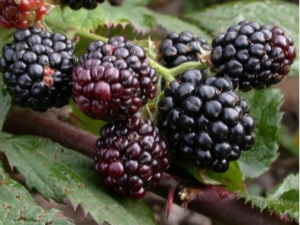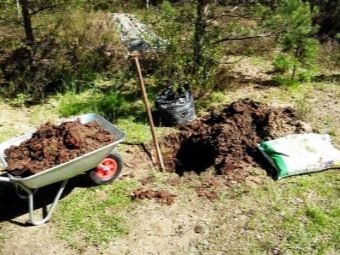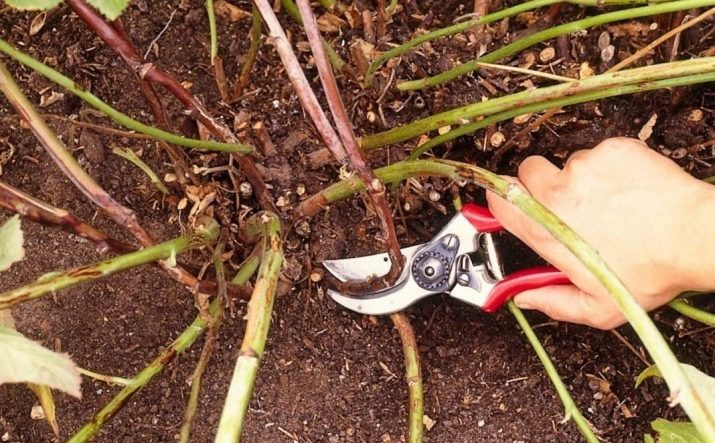Time and rules for transferring blackberries to a new place

Blackberry is a shrub whose fruits resemble raspberries in appearance and taste.A wild plant can bear fruit for up to 30 years, and a domesticated plant can have up to 10. If the blackberry has grown or if a redevelopment of the territory is required, then it is transplanted to another place. The shrub is propagated by dividing the maternal shrub or grafting. It is better to replant the plant in spring or autumn, following certain rules.
What month is better to replant?
The timing of the year depends on the region. In the northern regions frosts occur early, so blackberry transplantation in the fall is undesirable, as the plant does not have time to take root and may die. Therefore, gardening work is best done in the spring. But in the southern regions, autumn is the optimal time for planting. Frosts come late, roots take root well, and the next year, the blackberry is actively growing.
In the spring, the period for transplantation is chosen when the earth has just thawed out, but sap flow has not yet begun in the plants. The best time for this is mid-end of April. In May, it is already too late to replant the shrub.
In autumn, the plant is transferred to another place in the period from mid-October to the second decade of October. The earth is still loose and not cold, so the blackberry is well rooted. But in the winter it must be warmed, because the shoots may die at temperatures below 10 degrees.
Blackberries are unpretentious to the conditions of care, but in the first year after transplantation, it does not bear fruit, but only dissolves buds. Fruits from it can be expected only next year. To get a good harvest of berries, you should competently divide the young and fruiting plants. To do this, watch the shoots.
- If the branches bear fruit, they will disperse to the sides. Young shoots are collected in the center.
- The branches on which the fruits appear, stretch along the ropes and twine, stretched next to the plant. "Teenagers" ignore the prop and gather in the middle.
- The shoots on which the berries appear will “choose” the upper ropes, while the young ones will “give up” to them and remain on the lower ones.
How to choose a place?
Blackberry does not like a large amount of moisture, so a new place for it is chosen on a hill. There does not accumulate water, which can cause root rot. But for the very shrub do the deepening. This is necessary so that water during irrigation remains in the hole and gradually goes to the roots.
The hill on which the plant is planted, protects from the accumulation of melted snow and rainwater. The site should be sunny and protected from cold winds.
The soil for blackberries is loose, light, fertile. Sandy and loamy soil is suitable for this. A suitable option is a bed where roots, greens and other plants, except berries and nightshade, grew in the past year.
If the soil is depleted, it is fertilized with humus or peat. Any place on the site is selected on the basis of its redevelopment and the possibility of creating suitable conditions.
Step by step procedure
The degree of survival of blackberry depends on the preparation of the soil. Pre-test, ascertaining the level of acidity of the soil. It must be neither alkaline nor acid. The task of the gardener is to bring him to neutral indicators.
Acidity is increased by using iron sulfate, distributing it over the soil at the rate of 500 g / 10 sq. M. m. If this figure should be reduced, add lime. The transplant procedure takes place in stages.
- Before the blackberry transplant, they dig up the earth to a depth of 0.5 m.
- The soil is cleaned from roots and weeds.
- Compost is spread over a plot of 10 cm in an even layer, and an organic layer is laid on top of it: old foliage, sawdust.
- Complement the fertilizer mixture with mineral additives: magnesium, phosphorus, zinc.
- Fertilizers are re-digging along with the soil so that they are evenly distributed over the bed.
- The soil is poured abundantly with water, and a layer of mulch is placed on top of 8 cm. This is done so that the decomposition process in organic matter goes faster.
- In the place of the future landing of the blackberry set the trellis (vertical support for plants).
When the soil is prepared, the blackberry is dug out and quickly transplanted. The sooner this happens, the more likely it is that the roots will take root. Under the influence of sunlight, the branches of the plant wither, the roots lose their life-giving moisture. Blackberries are being dug out with great care, since the shoots and root system are very fragile.
The tip of the shovels indicate the edges of the earthy lump in which the roots of the blackberry are located. Plant break in, freeing the root system along with the soil. The shrub can be transplanted to another place with a lump of earth, but if separation of the maternal shrub is required, the roots are carefully freed from the soil. The plant is free from old, wilted shoots from the base of the trunk. If the shrubs are transplanted with them, the dead organics will begin to multiply pests that can destroy the blackberry.
A large bush can be divided into 2-3 parts, from which independent plants will later grow. Carefully remove the soil from the roots and cut the root system so that 2-3 shoots and 1 underground bud are left on each part. Or carefully cut off the grown cuttings, and then they are planted on the site. The distance between the bushes should not be less than 1.5 m, and the rows of blackberry are located at a distance of 2 m from the neighboring ones.
Transplanting cuttings is better to do in the fall, because by this time the shoots have time to get stronger over the summer period. Some gardeners perform this procedure in the summer, but young plants during this period have time to reach a height of 10-15 cm and are still too weak to bear even small frosts. Adaptation of "autumn" plants is much faster.
With creeping blackberry varieties, transplanting is much faster. A long winding branch at the base is pressed to the ground and sprinkled with soil in the place where the new blackberry bush is supposed to grow. The tip of the branch is left free. In the place where the blackberry escape was covered with earth, young roots begin to sprout. On this site will grow a new bush of blackberry, which can then be transplanted to his permanent place of residence.
There is an original way of autumn blackberry transplanting: on a sturdy, long shoot, a load is tied at the base, which cannot break a branch, but gradually bends it down. Every day, the escape all the lower slopes to the soil. When he is on the ground a few centimeters, he is bent down to the soil and insulated. Branch covered with straw, sawdust or dry hay. On top of the layer is warmed with roofing material or polyethylene.
In summertime, blackberries can also be transplanted, but gardeners should remember that this is a rather risky business. But if the blackberry has grown too much, and there is no other way out, then you should heed the following tips.
- Garden work should be carried out in the morning or evening when the transplanted bushes are not exposed to the aggressive effects of scorching sunlight.
- Blackberry transplant should be done very quickly, so that the branches and roots do not have time to fade. It is worth lingering and not replanting a bush for at least half an hour, and the sun can destroy the plant, even if it is plentiful to be watered after transplanting.
- If the plant has been quickly and competently transplanted, then it must be covered in the first days so that the roots take root.
- In the summer, during the week after transplantation, produce abundant watering of blackberry in the morning or evening.
Rules of the subsequent care of the plant
For young blackberries, which was covered with mulch, care is quite simple, because it does not need additional loosening and weeding. After transplantation, the plant is watered 1-2 times a week if there is no precipitation at this time. As soon as the withered leaves go back to growth, and the blackberry takes root, watering is stopped. Subsequent irrigation of the land occurs under the condition that the region has a dry period and the plant lacks moisture.
Obligatory procedure in autumn and springtime, cutting off old shoots. If the old branches are located next to the young, thin and weak, they are also removed. Blackberry sprouts protect against frost, covering them with canopy.
If this is a cultivar of a climbing plant, then the branches are gathered at the base along the entire length, neatly placed on a bed, closed with a canopy, which is sprinkled on top of the soil. When a strong wind blows, the material will remain in place.
When it is time to freeze, blackberries are examined for safety. Healthy branches are brown in color, but remain flexible. Dead shoots become fragile and brittle. The leaves on them are also brown, but shriveled and withered.
If 4-6 shoots remained healthy on one bush, then we can assume that the plant survived the winter successfully. If only 3 or less branches remain strong, then this year you can get a good harvest from healthy branches, but in the future the blackberry will not grow, and the number of harvested berries will not increase.
To protect the plant from gall mites, after pruning blackberry bush sprayed with infusion of garlic on the water. On hot days, besides watering, it is recommended to sprinkle blackberry with water in the morning and evening.
If transplantation took place in the spring, it is recommended to feed the plant with potassium fertilizers during the budding period. If everything is done correctly, the gardener gets a bountiful harvest of berries for 10-12 years before the time of the next transplant.
On the rules of blackberry transplantation, see the following video.





































